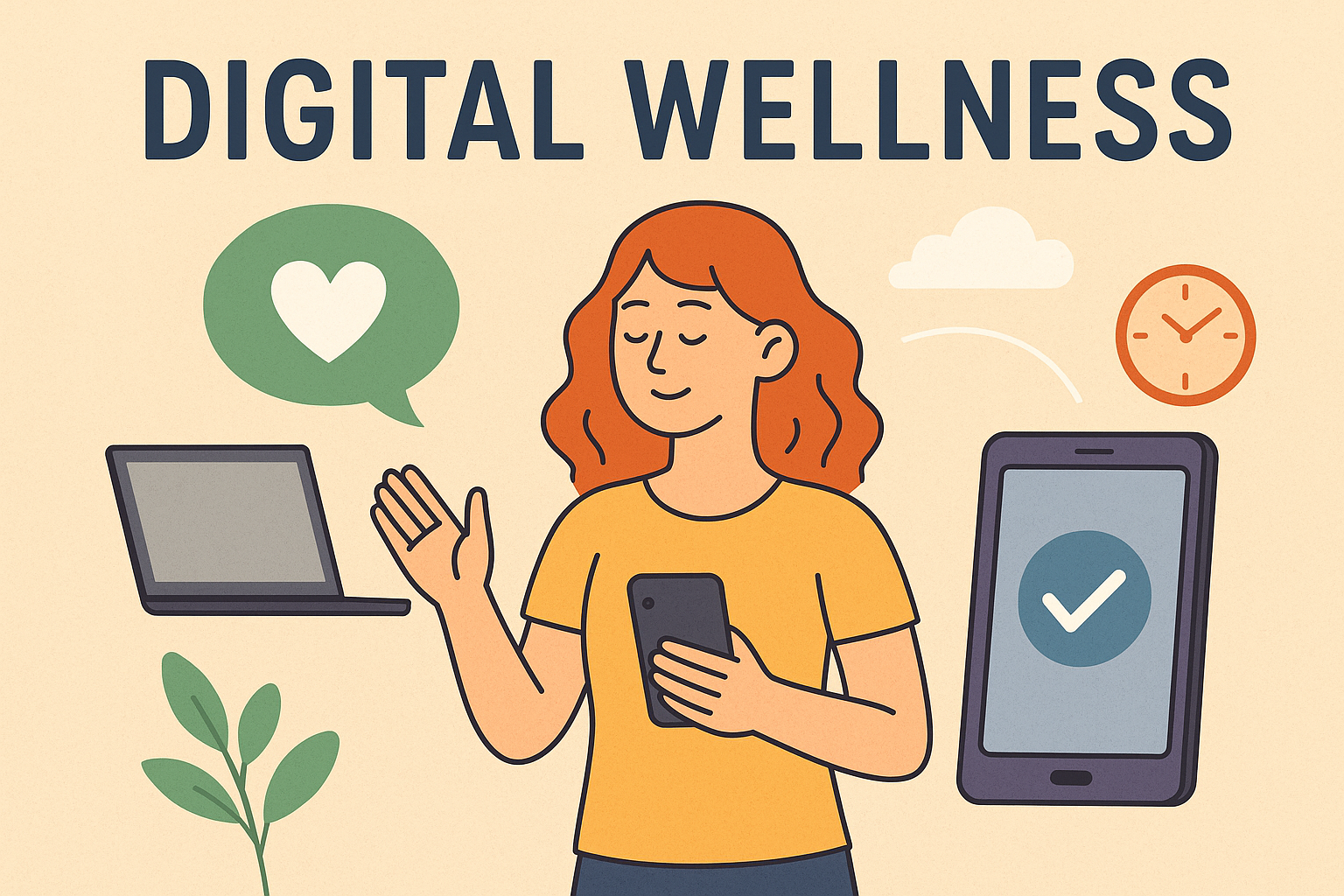Introduction
We live in a time where our phones wake us up, laptops run our workday, and social media fills our free hours. Technology makes life easier, but it also makes our minds busier. Many people feel constantly “switched on,” overwhelmed by notifications, endless scrolling, and screen fatigue.
This is where the idea of digital wellness comes in. It’s not about rejecting technology—it’s about learning how to use it mindfully so that it improves, rather than harms, our well-being.
1. Why Digital Wellness Matters
The average person spends more than 6–7 hours daily on screens—that’s nearly half our waking life. While technology helps us stay connected, too much screen time can:
- Disrupt sleep patterns.
- Increase stress and anxiety.
- Reduce focus and productivity.
- Affect posture, eyesight, and overall health.
Just like physical exercise strengthens our body, digital wellness practices strengthen our relationship with technology.
2. Signs You Need a Digital Reset
It might be time to rethink your screen habits if you notice:
- Reaching for your phone the moment you wake up.
- Feeling restless without checking notifications.
- Mindlessly scrolling late into the night.
- Reduced face-to-face conversations with loved ones.
- Difficulty focusing on one task without digital distractions.
These are small signals that technology may be controlling you, rather than the other way around.
3. Practical Ways to Build Digital Wellness
Digital wellness isn’t about giving up gadgets—it’s about smarter use. Here are some simple tips:
- Set screen time limits: Use apps to track and reduce daily usage.
- Tech-free mornings and nights: Start and end your day without screens.
- Digital detox hours: Pick at least 1–2 hours daily to be offline.
- Curate your feed: Follow accounts that inspire, unfollow those that drain.
- Prioritize face-to-face interactions: Real conversations are more nourishing than likes and comments.
4. Digital Wellness at Work
Remote work and constant emails can blur the line between office and home. To maintain balance:
- Avoid back-to-back video calls.
- Take short screen breaks every hour.
- Use “Do Not Disturb” settings during deep work.
- Communicate clear online-offline boundaries with colleagues.
Your mind works better when it gets time to rest and reset.
5. The Future of Digital Wellness
As awareness grows, digital wellness is becoming a global movement. From apps that monitor screen use to companies offering wellness days and mindfulness workshops, the focus is shifting to healthier tech habits.
The future of wellness won’t be about rejecting technology—it will be about designing technology that respects human limits and helps us live healthier lives.
Conclusion
Technology is a powerful tool, but like any tool, it must be used wisely. Practicing digital wellness means learning when to log in and when to log out. It’s about finding space for real conversations, nature, rest, and creativity.
In a world where everything is online, the true luxury might just be disconnecting to reconnect—with ourselves and with life.

Leave a Reply